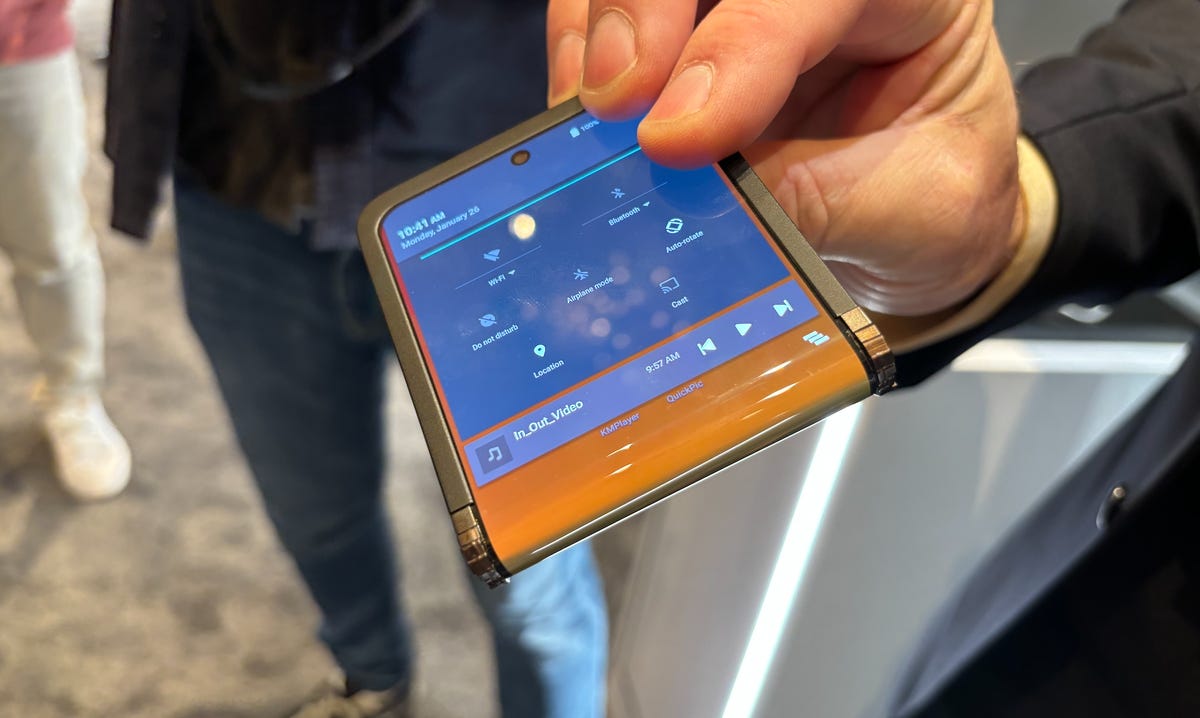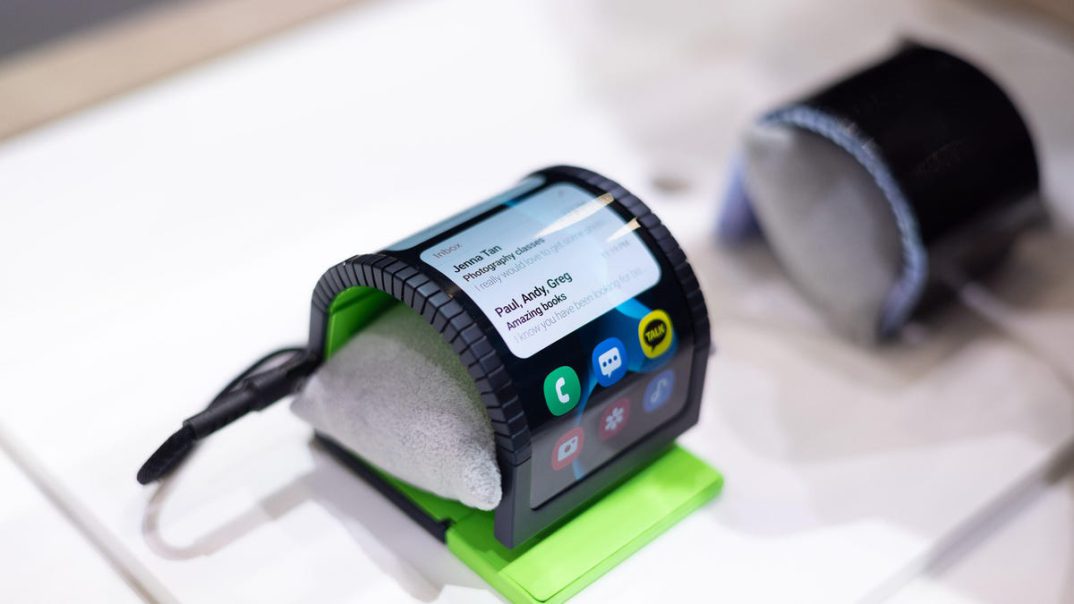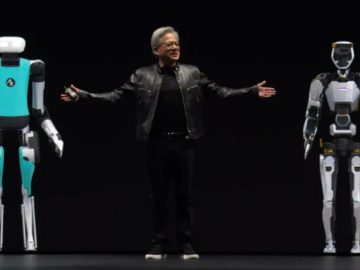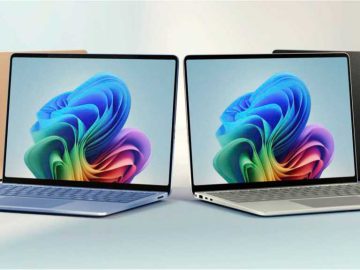Samsung has been selling foldable phones for years, but the Galaxy Z Fold and Z Flip only represent a portion of the company’s ideas. That’s become evident in recent years as the tech giant’s display division has provided a glimpse into the concepts it’s been tinkering with behind the scenes, which include mobile devices that can bend in both directions, fold like an accordion and even wrap around your wrist.
This story is part of Samsung Event, CNET’s collection of news, tips and advice around Samsung’s most popular products.
But none of those concepts have evolved beyond just that. Patrick Chomet, Samsung’s executive vice president and head of customer experience, explained how the company decides when it’s time for a gadget to graduate from an idea to a product you can actually buy. It’s a critical decision for Samsung; as the world’s largest smartphone maker by shipment volume, its moves can influence the mobile industry’s general tone and future direction. That’s particularly true for the Android landscape, especially now that Google and Samsung are working more closely together than ever.
“We are looking at different form factors in smartphones, and we will continue to do that,” he said to CNET just before the company’s Unpacked event earlier this month, also adding that his team is “looking at all kinds of new form factors.”
Read more: Scoop: Samsung Is Testing an AI Health Coach as the Race Against Apple, Google Heats Up
Watch this: Galaxy Z Fold 6 Review: Samsung’s Best Foldable Yet Comes at a High Cost
07:57
According to Chomet, there are three main elements that influence Samsung’s choice to pursue a new product category. Whether the technology makes sense and provides value for the customer experience is the primary factor, but Samsung also considers how new devices fit into its ecosystem of products and the software experience. Those themes were on full display during the company’s July 10 product launch, where it introduced the Galaxy Z Flip 6 and Z Fold 6 alongside new wearable devices like the Galaxy Ring and fresh AI software features.
“Those three kind of move in parallel,” he said. “And what we are doing in product planning is we just line the stars.”
Samsung hasn’t launched a new Galaxy foldable category since it introduced the original Galaxy Z Flip in 2020. But it’s flaunted plenty of prototypes since then, including the Flex In & Out Flip, a clamshell phone that can fold both ways that it demonstrated at CES in January. The Flex Liple, another flip phone with a screen that curves around its top edge, was also on display at the annual tech conference this year.
And who could forget the concept phone that wraps around your wrist like a smartwatch, which made an appearance at Mobile World Congress in February? Yet another concept, the Flex S, folds in two places like an S, essentially cramming multiple screens into one portable device.

Samsung’s Flex In & Out concept is like a Z Flip that can fold both ways.
These are likely just a few of the ideas swirling around inside Samsung, as TM Roh, president and head of the company’s mobile experience business, teased back in 2022.
“It’s everything you saw [at CES] plus more,” he said to CNET roughly two years ago.
But the world of foldables is much different from what it was back then. Generative AI shook up the tech industry’s roadmap following the runaway success of ChatGPT, leading to more emphasis on software features, image editors and chatbots rather than just flashy new hardware. Plus, Samsung now has more competition than ever in the foldable phone space, both from newcomers like Google and OnePlus and veterans like Huawei, which snagged the top spot in the foldable phone market in the first quarter of 2024, according to Counterpoint Research.
“What we are doing in product planning is we just line the stars.”
Patrick Chomet, Samsung’s executive vice president and head of customer experience
There’s no telling whether any of Samsung’s funky phone concepts will pan out. But the company is working on a secretive new mixed reality project with Qualcomm and Google, which it initially teased during its Unpacked event in early 2023. Rick Osterloh, Google’s senior vice president for platforms and devices, gave a quick update during Samsung’s July 10 event without divulging new details, reassuring audiences that development is indeed underway.
“We’ve been working closely to develop in partnership with Samsung and Qualcomm for next-generation devices, and you’ll want to stay tuned for that,” he said on stage.
Read more: Why Oura’s CEO Isn’t Worried About Samsung’s Galaxy Ring
Chomet couldn’t share details about these upcoming mixed reality plans. But he did hint that “multimodal technology” — i.e. tech that uses multiple forms of input such as text, cameras and speech — and large language models could play a role in the project’s direction.
“The computing power is very important, the multimodal interaction,” Chomet said when asked about Samsung’s approach for a mixed-reality device, also adding that ergonomics and optics are crucial. “But I believe the whole thing, what will make it really, really useful for people, is actually AI, which is LLM-powered AI. So stay tuned.”
That lines up with Samsung and Google’s overall direction; both companies emphasized how generative AI is shaping their products over the past several months. There’s the Galaxy Z Fold 6 and Z Flip 6’s new image generation tools, which are among their biggest new features. Google, meanwhile, showcased updates to its Gemini virtual helper and AI-fueled app updates at Google I/O in May.
It’s impossible to know when or if this mixed-reality product, or Samsung’s flexible mobile concepts, will materialize in a tangible product. But if one thing seems certain, it’s that Samsung will keep testing ideas.
“We will experiment,” said Chomet. “But launch what makes sense.”
The Coolest Phones at MWC 2024 From Samsung, Honor, Motorola and More
See all photos
Originally Appeared Here





